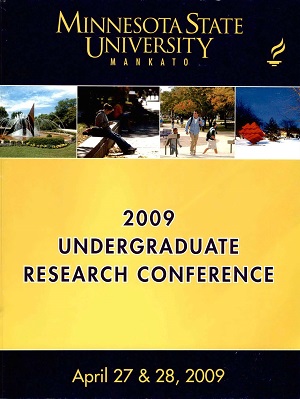Hybrid Development and Diesel Emissions Technology
Location
CSU 253/254
Start Date
27-4-2009 9:30 AM
End Date
27-4-2009 12:00 PM
Student's Major
Automotive and Manufacturing Engineering Technology
Student's College
Science, Engineering and Technology
Mentor's Name
Bruce Jones
Mentor's Department
Automotive and Manufacturing Engineering Technology
Mentor's College
Science, Engineering and Technology
Second Mentor's Name
Vincent Winstead
Second Mentor's Department
Electrical and Computer Engineering and Technology
Second Mentor's College
Science, Engineering and Technology
Description
As a result of environmental issues, the demand for smaller, more fuel efficient vehicles is on the rise. High efficiency diesel vehicles that are able to meet emissions standards in the United States would be an asset in combating global emissions. Along with a small, high efficiency diesel engine, a hybrid assist system would greatly reduce the carbon foot print of any vehicle. For this project, the vehicle chosen was a Smart ForTwo CDi. A plan was then formulated to incorporate emissions related after treatment to meet Tier 2 Bin 5 standards and incorporate a parallel hybrid drive system. By measuring emissions and making modifications to the exhaust system, in addition to applying a hybrid drive system to the Smart car, the fuel efficiency can be further improved. With small, commuter cars like the Smart ForTwo CDi being utilized in large, urban cities across the country congestion as well as pollution can be significantly reduced, especially when used in conjunction with the proposed exhaust after treatments and hybrid drivetrain.
Hybrid Development and Diesel Emissions Technology
CSU 253/254
As a result of environmental issues, the demand for smaller, more fuel efficient vehicles is on the rise. High efficiency diesel vehicles that are able to meet emissions standards in the United States would be an asset in combating global emissions. Along with a small, high efficiency diesel engine, a hybrid assist system would greatly reduce the carbon foot print of any vehicle. For this project, the vehicle chosen was a Smart ForTwo CDi. A plan was then formulated to incorporate emissions related after treatment to meet Tier 2 Bin 5 standards and incorporate a parallel hybrid drive system. By measuring emissions and making modifications to the exhaust system, in addition to applying a hybrid drive system to the Smart car, the fuel efficiency can be further improved. With small, commuter cars like the Smart ForTwo CDi being utilized in large, urban cities across the country congestion as well as pollution can be significantly reduced, especially when used in conjunction with the proposed exhaust after treatments and hybrid drivetrain.
Recommended Citation
Ramthun, Jayson; Aaron Jackson; Matthew Blaha; Michael Dannenberg; Alex Bellus; and David Carroll. "Hybrid Development and Diesel Emissions Technology." Undergraduate Research Symposium, Mankato, MN, April 27, 2009.
https://cornerstone.lib.mnsu.edu/urs/2009/oral-session-04/3



